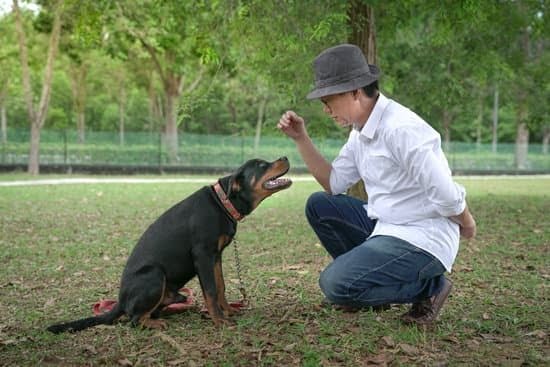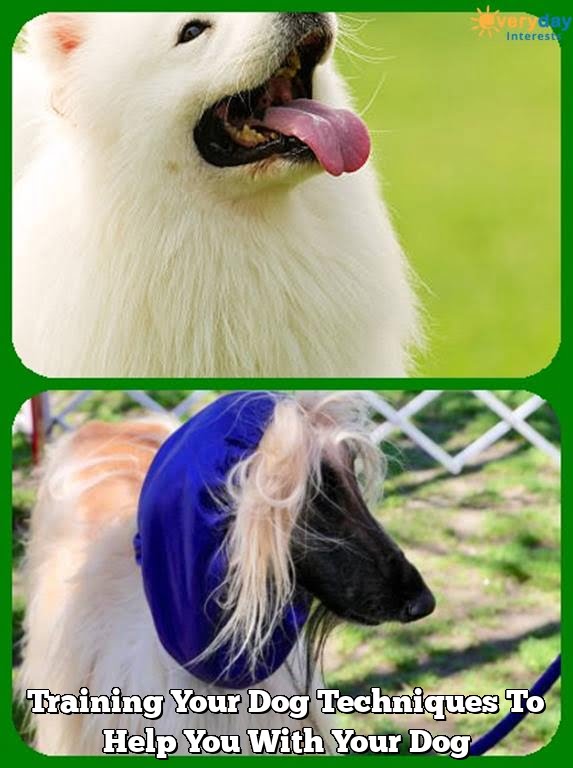Are you looking to stay active and healthy while spending quality time with your furry friend? In this article, we will explore the benefits of jogging with your dog and provide you with tips on how to train your dog to jog with you.
Jogging with your dog not only helps keep both of you physically fit but also strengthens the bond between you and your loyal companion. It is a great way to spend time together, enjoy the outdoors, and release energy in a positive way. Training your dog to jog with you can be a fun and rewarding experience for both of you.
Before embarking on this journey, it’s important to assess your dog’s physical condition and suitability for jogging. Not all dogs are built for long-distance running, so it’s crucial to determine if your dog is healthy enough to accompany you on jogs. Once you’ve assessed their fitness level, basic obedience training will be essential for a successful jogging partnership. Stay tuned as we guide you through each step of the training process.
Assessing Your Dog’s Physical Condition and Suitability for Jogging
Before you start training your dog to jog with you, it is essential to assess your dog’s physical condition and determine if they are suitable for this activity. Not all dogs are built for sustained running, so it’s crucial to evaluate their breed, age, size, and overall health before hitting the trails. Here are some factors to consider when assessing your dog’s suitability for jogging:
- Breed: Some breeds, such as Border Collies and Dalmatians, are naturally inclined towards running and have the stamina for long-distance jogs. On the other hand, brachycephalic breeds like Bulldogs may struggle with breathing during intense exercise.
- Age: Puppies under 1 year old should not engage in strenuous activities like jogging as their bones are still developing. Senior dogs may also have joint issues that could be aggravated by jogging.
- Health: Ensure that your dog is in good health before starting a jogging routine. Check for any underlying conditions that may affect their ability to run comfortably and safely.
Once you have carefully assessed your dog’s physical condition and determined their suitability for jogging, you can proceed with the next steps in training them to become a reliable jogging companion.
It is crucial to consult with a veterinarian before embarking on any new exercise regimen with your pet. They can provide guidance on whether your dog is fit enough to begin a jogging routine and offer tailored advice based on your dog’s specific health needs. By taking these precautionary measures, you will set yourself up for a successful journey of training your dog to jog with you.
Starting With Basic Obedience Training for Jogging
When it comes to training your dog to jog with you, basic obedience training is essential. Before hitting the pavement or trail with your furry companion, it’s important to ensure that they understand and obey basic commands. Here are some key steps to consider when starting with basic obedience training for jogging:
1. Establishing key commands: Start by teaching your dog fundamental commands such as “sit,” “stay,” “come,” and “heel.” These commands are crucial for maintaining control and ensuring a safe and enjoyable jog for both you and your dog.
2. Leash training: Proper leash manners are vital for jogging with your dog. Teach them to walk or run calmly beside you without pulling on the leash. Using positive reinforcement techniques, encourage your dog to stay by your side during walks before progressing to jogging.
3. Practice in different environments: Once your dog has mastered basic commands and leash manners, gradually introduce them to different environments such as parks, sidewalks, or trails. This will help them become comfortable with various surroundings while maintaining their obedience during jogs.
By laying a strong foundation of basic obedience training, you can set the stage for a successful jogging experience with your dog. Patience, consistency, and positive reinforcement are key components in preparing your dog for this activity.
Remember that every dog is unique, so it’s important to tailor the training process according to their individual needs and abilities. With dedication and proper guidance, you can effectively train your dog to jog alongside you in a safe and enjoyable manner.
Gradually Increasing Distance and Pace for Your Dog
Once you have established a solid foundation in basic obedience training for jogging with your dog, it is essential to gradually increase the distance and pace to ensure that your furry companion can keep up and build endurance. This process requires patience, consistency, and attentiveness to your dog’s physical cues.
Assessing Your Dog’s Readiness
Before you begin increasing the distance and pace of your jogs, assess your dog’s readiness by observing their behavior during shorter runs. Look for signs of fatigue, discomfort, or any hesitation. It is important to pay attention to your dog’s breathing, gait, and overall energy level. If they seem eager and energetic throughout the run, it may be an indication that they are ready for more challenging workouts.
Gradual Progression
It is crucial to approach this phase gradually. Start by adding a little extra distance to your usual route over a few days or weeks. Pay close attention to how your dog responds to these incremental changes. Additionally, consider increasing the pace at which you jog in small increments to allow your dog’s muscles and cardiovascular system time to adapt.
Monitoring Your Dog’s Response
Throughout this process, continue closely monitoring how your dog responds to the increased distance and pace. Watch out for any signs of fatigue or discomfort. If you notice any concerning behaviors or physical symptoms from your dog, consider slowing down the pace or decreasing the distance until they are comfortable again.
By following these steps and being attuned to your dog’s needs, you can progressively build their endurance and confidence while jogging with you. Remember that every dog is different, so it is important to tailor the training process based on their individual capabilities and comfort level.
Introducing Proper Jogging Equipment for Your Dog
When it comes to training your dog to jog with you, having the right equipment is essential for both their safety and comfort. One of the most important pieces of equipment is a well-fitted harness that will allow your dog to move freely without putting pressure on their neck.
This will also give you better control over your dog during the jog. It’s important to take the time to find the right harness for your dog’s size and breed, as well as one that is specifically designed for jogging.
In addition to a harness, you may also want to consider a hands-free leash that can be worn around your waist. This will give you more freedom of movement and make it easier for you to jog without worrying about holding onto a leash.
Another important piece of equipment is reflective gear, especially if you plan on jogging with your dog in low light conditions. This will help keep both you and your dog visible and safe during your jogs.
Finally, don’t forget about proper footwear for your dog. Just like humans, dogs can benefit from wearing protective booties to prevent injuries from rough terrain or extreme temperatures. Once you have the right equipment in place, you can begin training your dog to jog alongside you safely and comfortably.
| Equipment | Use |
|---|---|
| Well-fitted harness | Allows freedom of movement and control |
| Hands-free leash | Enables freedom of movement for the owner |
| Reflective gear | Increases visibility in low light conditions |
| Protective booties | Prevents injuries from rough terrain or extreme temperatures |
By investing in these essential pieces of jogging equipment, you’ll not only ensure the safety and comfort of your furry companion but also maximize the enjoyment of jogging together.
Remember that every dog is different, so it may take some trial and error to find the right combination of equipment that works best for both you and your canine running partner. Patience and consistency are key when introducing new gear during training sessions on how to train your dog to jog with you.
Troubleshooting Common Issues and Concerns While Jogging With Your Dog
Leash Pulling and Distractions
One common issue while jogging with your dog is leash pulling or being distracted by other animals, people, or objects. To address this, it’s important to continue reinforcing obedience training during jogs. Use positive reinforcement techniques to redirect your dog’s attention back to the run and consistently practice commands such as “heel” or “focus” during your training sessions.
Overexertion and Fatigue
Another concern while jogging with your dog is the risk of overexertion and fatigue, especially if your dog is not accustomed to long-distance running. It’s crucial to monitor your dog’s breathing, pace, and overall demeanor during the jog. If you notice any signs of exhaustion or discomfort, stop immediately and allow your dog to rest. Gradually increase the distance and pace over time to build up their endurance safely.
Heat-Related Issues
During warmer weather, heat-related issues such as dehydration or heatstroke can be a significant concern for dogs while jogging. Always plan your runs during cooler times of the day and carry water for both yourself and your dog. Take regular breaks in shaded areas where your dog can rest and drink water. Be aware of signs of heat stress such as excessive panting, drooling, or lethargy, and seek veterinary attention if necessary.
By addressing these common issues and concerns while jogging with your dog, you can ensure a safe and enjoyable experience for both you and your furry companion. Remember that patience, consistency, and proper training are essential for successfully integrating your dog into your jogging routine.
Incorporating Regular Breaks and Hydration for Your Dog During Jogs
Firstly, it’s important to pay attention to your dog’s behavior and body language during the jog. If you notice that your dog is panting heavily, slowing down, or trying to stop, it may be a sign that they need a break. Find a suitable spot where you can both rest for a few minutes, allowing your dog to catch their breath and recover before continuing the jog.
Hydration is equally important, so make sure to carry water for both you and your dog during the jog. Investing in a portable water bottle with an attached bowl designed for dogs can make it easier to offer them water during breaks.
Stop every 10-15 minutes for a quick water break, offering small amounts of water at a time to prevent them from drinking too much too quickly. This will help prevent dehydration and keep your dog comfortable throughout the jog.
It’s also important to consider the weather conditions when planning your jogs. Hot weather can pose a higher risk of heat exhaustion for dogs, so schedule your jogs during cooler times of the day and avoid jogging on hot pavement.
Adjusting the frequency and length of breaks based on the weather conditions is essential to protect your dog from heat-related issues. By incorporating regular breaks and proper hydration into your jogging routine, you can ensure that both you and your dog have an enjoyable and safe experience while staying active together.
| Incorporating Regular Breaks | Hydration for Your Dog During Jogs |
|---|---|
| Pay attention to your dog’s behavior | Invest in a portable water bottle with an attached bowl |
| Schedule jogs during cooler times of the day | Stop every 10-15 minutes for a quick water break |
Ensuring the Safety and Health of Your Dog While Jogging
When jogging with your dog, it’s important to prioritize their safety and health throughout the entire activity. One of the key aspects of ensuring their well-being is by taking into consideration their physical condition and limitations.
Before embarking on regular jogging sessions, it’s crucial to consult with your veterinarian to ensure that your dog is in good health and physically fit for this type of exercise. Their age, breed, and any pre-existing conditions should be considered to prevent any potential injuries or risks.
In addition to assessing your dog’s physical condition, it’s essential to pay attention to their behavior and comfort level while jogging. Keep an eye on signs of fatigue, discomfort, or overheating. If your dog shows any signs of distress, it’s important to stop immediately and allow them time to rest and recuperate. Furthermore, always carry water for both you and your dog during jogs, providing regular hydration breaks as needed.
Moreover, outfitting your dog with the proper jogging equipment is crucial for their safety. Invest in a comfortable harness that is specifically designed for running or jogging activities. This will help distribute the pressure evenly across their body, minimizing the risk of strain or injury. Additionally, consider using a hands-free leash that allows you to maintain control over your dog while keeping your hands free for balance and support during the jog.
By prioritizing the safety and health of your dog during jogs, you can create an enjoyable and fulfilling experience for both you and your furry companion as they accompany you on your fitness journey.
Overall, proper training will make a huge difference in how well behaved man’s best friend can be when out running compared to not commanding those extra skills.
Conclusion
In conclusion, training your dog to jog with you can create a positive and enjoyable experience for both you and your furry companion. By understanding the benefits of jogging with your dog and assessing their physical condition, you can ensure that they are suitable for this type of exercise. Starting with basic obedience training is crucial in preparing them for jogging, and gradually increasing distance and pace will help build their endurance.
Introducing proper jogging equipment such as a comfortable harness and reflective gear is essential for your dog’s safety. Additionally, troubleshooting common issues, incorporating regular breaks, and ensuring hydration are all important factors to consider while on jogs with your dog. It is also vital to prioritize the safety and health of your dog, so always be aware of their well-being during the activity.
Ultimately, by investing time in training and preparing your dog to jog with you, you can enjoy the journey together. The bond between you and your well-trained dog will strengthen as you both benefit from this shared exercise routine. With patience, consistency, and proper attention to detail, you can have a rewarding experience jogging with your furry friend by following these steps on how to train your dog to jog with you.
Frequently Asked Questions
How Do I Get My Dog to Jog With Me?
Getting your dog to jog with you can be a great way to bond and exercise together. Start by getting your dog used to walking on a leash, then gradually increase the pace to a jog. It’s important to consider your dog’s breed, age, and overall health before starting a jogging routine.
How Do You Teach Your Dog to Run With U?
Teaching your dog to run with you requires patience and consistent training. Start by ensuring your dog is comfortable walking on a leash, then slowly introduce running in short bursts. Use positive reinforcement, such as treats and praise, to encourage your dog to run alongside you. Gradually increase the distance and pace as your dog becomes more comfortable.
Is It Good to Jog With Your Dog?
Jogging with your dog can have many benefits for both of you. It provides physical exercise for your dog, helps release pent-up energy, and can strengthen the bond between you two.
However, it’s important to consider factors such as your dog’s breed, age, and overall health before starting a jogging routine. Always consult with a veterinarian before beginning any new exercise regimen for your dog.

Welcome to the blog! I am a professional dog trainer and have been working with dogs for many years. In this blog, I will be discussing various topics related to dog training, including tips, tricks, and advice. I hope you find this information helpful and informative. Thanks for reading!





